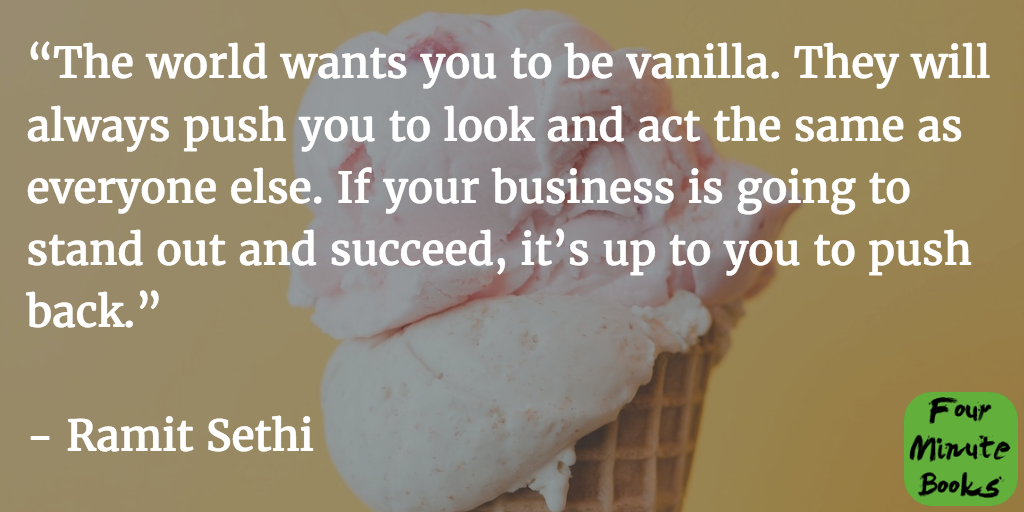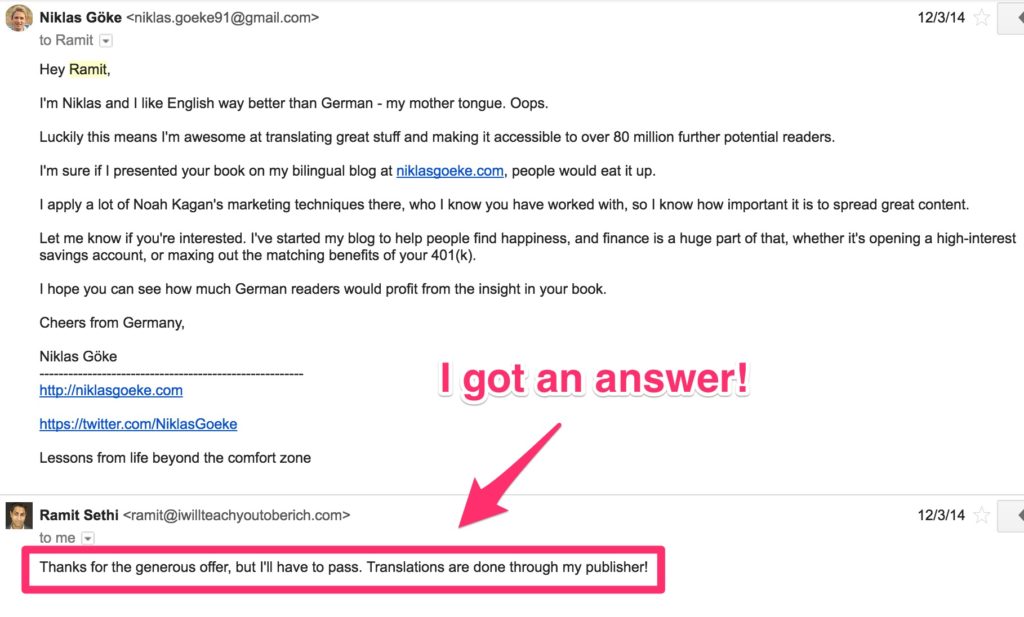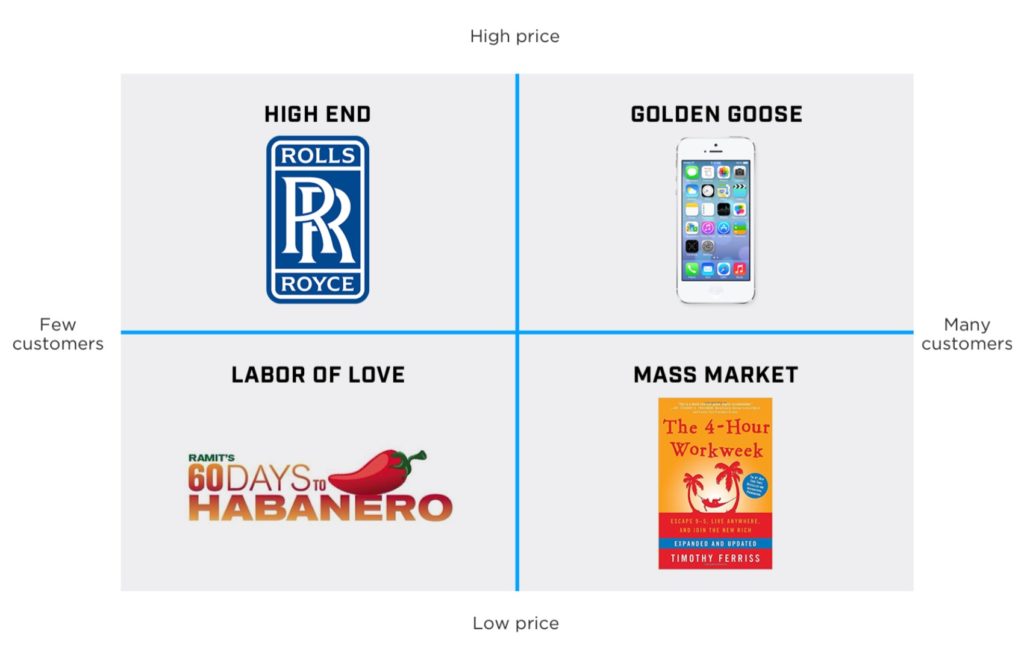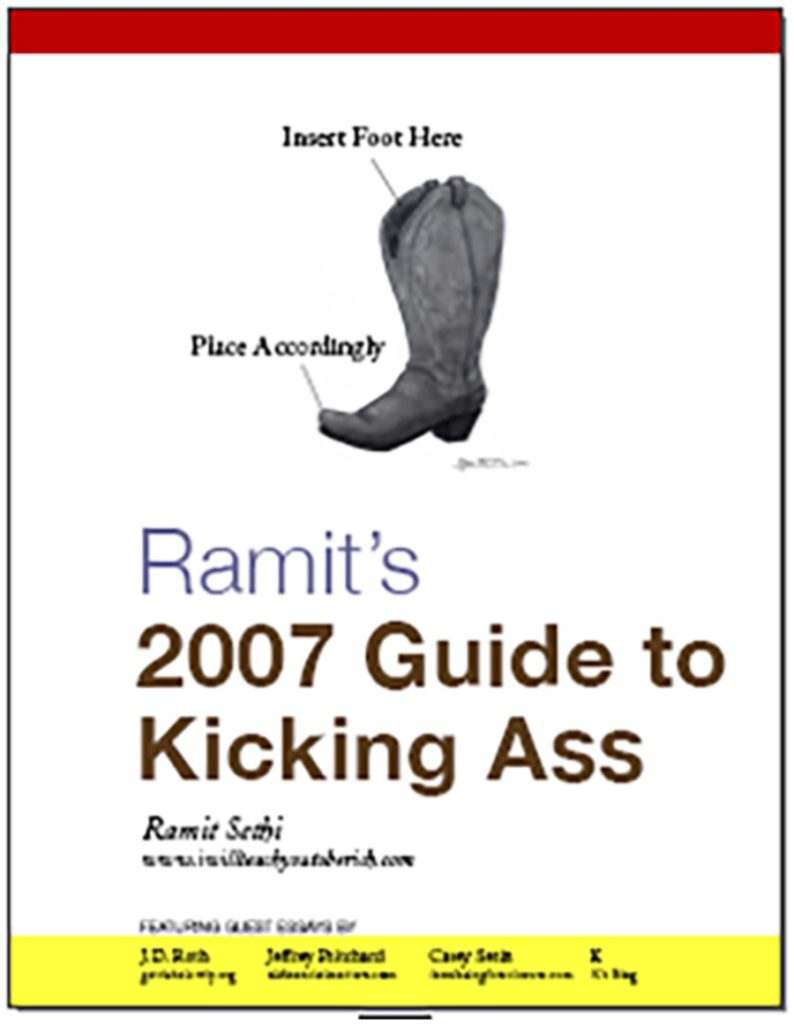1-Sentence-Summary: Your Move: The Underdog’s Guide to Building Your Business is Ramit Sethi’s no-BS guide to starting your own business that’ll help you escape the 9-to-5, all the way from coming up with profitable ideas, overcoming psychological barriers and figuring out who to sell to to growing, maintaining and systematizing your business in the future.
Read in: 8 minutes
Favorite quote from the author:

Audio Summary
Listen to the audio of this summary with a free reading.fm account:
I Will Teach You To Be Rich was one of the first books I read after starting my blog. It was also one of the very first summaries on here. There’s even a picture of it on the about page of this site. What you don’t know is that Ramit Sethi is also one of the first influencers I ever reached out to – with a pitch to translate his book to German. Here’s the email I sent 2.5 years ago:

That might not have worked out but now, 8 years after his last, Ramit has a new ebook coming out, and guess who he reached out to to summarize it for you? Your Move: The Underdog’s Guide to Building Your Business is Ramit’s distillation of the lessons he learned about starting, maintaining and growing his business to over 1,000,000 readers, 50+ employees and millions of dollars in revenue.
Like you and I, Ramit comes from much humbler beginnings though. Growing up with Indian parents, money was always tight. Eating out was rare, gadgets were a no-go and Ramit started dreaming about a life in which he didn’t have to turn every dime twice. But thanks to the discipline he learned at home, Ramit got into Stanford after graduating high school, and even applied to over 60 scholarships to be able to fund his studies.
His first scholarship check went right into the stock market – at the height of the hype in late 1999, early 2000. Ramit lost half of his money and vowed to get better with the subject. He read every personal finance book he could find. But when he talked to his friends, he noticed that even though the tips the gurus gave worked, nobody followed them – because nobody wants to give up their daily $3 latte to save $1,000 in a year!
What kept people from succeeding in how they handle money wasn’t a lack of information, it was the psychology and fundamentals of human behavior that were flawed. As a result, Ramit launched IWillTeachYouToBeRich.com from his dorm room in 2004 and started sharing his ideas. Over a decade later, he’s now the CEO of GrowthLab, which helps people start their own business so they too can live a rich life – and that’s not just about money!
Your Move is divided into three sections: mastering the fundamentals, focusing on the right things and growing your business in the future. Here’s one lesson from each of those:
- Find a profitable business idea with four simple questions and the Demand Matrix.
- Overcome your fear of selling by focusing on just the right people.
- Calibrate your mind for what’s to come with a growth mindset.
What better way to celebrate the release of this instant bestseller than by taking one lesson from each section and diving deep into the psychology, action and planning of starting your business? Let’s go!
Lesson 1: You can make sure your business idea is profitable with four questions and by running it through the Demand Matrix.
Let’s start at ground zero. You’re considering yourself to be normal, not particularly skilled in anything and have no ideas. Zip. Nada. Where should you even begin to think business? This is where Ramit shines: Breaking things down to the simplest step you can take. He’s used the same process for all of his 20+ products and it all starts with thinking about what you already pay for yourself.
Before you even begin to worry about what you could sell or teach, bear this in mind: If you don’t create something people want to buy, it won’t matter how good it is. Nonprofits, students, restaurants, these are all bad target groups, because, well, they don’t want to spend money! You have to go where the fish are.
Here’s how in three steps:
Step 1: Start with ideas that suck. Yes, you read that right. Give yourself permission to be shitty at first. Take off the pressure. Then go.
Step 2: Answer four questions. The following questions will help you find the intersection of what you’re good at, what excites you and what you can sell. It’s similar to finding your Eulerian Destiny (you can find a template here).
- What do I already pay for? If you pay someone to help with this, chances are, you’re not the only one. List ten things.
- What skills do I have? Write down the ten first things you can think of. No filtering! Remember step 1.
- What do my friends say I’m great at? This is similar to the last question, but more revealing. If you can ask strangers, get their feedback too. If not, stick with friends and family. List 3-5 items.
- What do I do on Saturday morning?
Step 3: Use the Demand Matrix to validate your idea. Whatever you have as a result might still not be good enough to get people to whip out their wallet. Since you can’t pre-sell without an audience, you can at least use a simple tool Ramit calls the Demand Matrix to see if people are likely to pay.

The idea is simple. Think about how many people will want what you make and how much they’d be willing to pay.
A high-price, high-demand product, like an iPhone, is a golden goose. With many people but a smaller price, you can attack the masses, like with books. Having few customers is still okay if you sell something really expensive, like Rolls-Royce does. But if you want to teach a course on how to eat spicy food, like Ramit would love to, that not many people would want, especially not at a high price, that idea you can crumple up and toss right away.
Lesson 2: You’ll have to overcome your fear of selling stuff and the best way to do that is to focus on only the right people to sell to.
Guess how long Ramit waited until he created his first product to sell. Two years! By the time he released it, he already had 50,000 visitors/month. Guess how much he charged for Ramit’s 2007 Guide to Kicking Ass? A glorious $4.95. And he was scared to death. What if people called him a sellout? Would he charge too much? What if everyone would want a refund?
When we start out, most of us price our products and services out of fear. And we’re right. All of those things Ramit feared did happen. But people also bought. And loved the ebook.

Because people value what they pay for. With information products, the reasoning to give people access for free is there. It doesn’t cost anything – except for our self-respect. I’ve been there. It’s frustrating to trust someone to take action on the work that you’re proud of and then see them never even look at the damn thing.
When you stop doing that, you’ll notice something. The freeloaders will go away. But those, who are okay with paying full price, will actually consume your material. All of it. So you should never be apologetic when you sell. Be proud. Focusing on the misers will only attract more misers.
Instead, focus on the people who want to take action. The people with an important problem that trust you to solve it. The people who believe in you. And then let your pricing signify you are that person.
No matter if you’re a natural salesperson or not, as Ramit says: “When you nail the right audience, price is a mere triviality.”
Lesson 3: To brace yourself for what’s to come in the future, you’ll need a growth mindset, so start working on it to day.
One year from now, where will you be? You can be in the same spot, reading the same summary on the same computer. Or, you can actually go out and put these lessons into practice. But it’ll be hard. Everybody gets stuck. What makes winners different is that they grow anyway.
Ramit says having to reinvent himself down to his core, over and over again, is one of the hardest things he’s ever had to do, and it’s something few entrepreneurs talk about. He compares today’s “CEO Ramit” with 2004 “Dorm Room Ramit” and draws five distinct lessons about important aspects of business:
- Roughness. Dorm Room Ramit wanted everything to be perfect. The site design, the copy, the headline of each email. CEO Ramit knows that most often, especially before you reach $100k/year in revenue, it’s about living to see another day. Let things be rough and let future-you iron out the kinks.
- Profitability. Back in the day, Ramit just wanted his blog to be popular. But neither time-spent-on-site nor number of user sessions will pay your rent. He now knows that only a profitable business is an actual business, no matter how popular it is.
- Focus. All solo entrepreneurs start as jacks of all trades. Design, writing, coding, marketing, the list goes on. But like another great CEO, Ramit eventually had to learn to say no. Better to be world class at a few things, than average at many.
- Team building. Without ever having assembled one, Ramit used to say he wanted to keep things small. Faced with the choice of giving up his dream of reaching millions of people or starting to hire, he saw there was no real discussion to be had. Nobody can reach this many people without help. So he learned how to build a team.
- Flexibility. Entrepreneurship is all about moments in time. The few timeless principles Ramit initially wanted to solely rely on eventually stopped working. He still thinks having some is important, but he now lives by the mantra of: what got you here won’t get you there.
What these lessons enabled Ramit to do is probably the most important thing any aspiring entrepreneur needs to learn: to get comfortable with being uncomfortable. It’s such a cliché, but it’s true. Especially as you get bigger and bigger. When ten Olympic athletes show up at the starting line, physically, they could all win. The ever-decreasing margins between winners and runner-ups are in their minds.

Calibrating your mind towards excellence now will allow you to play to win. You won’t always, but you’ll stop competing in the amateur sandbox. Why double your revenue when you can try to triple it? Why reach 100 people when you can go for 1,000?
Instead of playing it slow, set 3-5 big stretch goals a year and go all-in on those. That’s what professionals do. It’s what transformed Ramit from dorm room dabbler to million dollar CEO and maybe, just maybe, it’ll transform you that way too.
Fold-out bonus time!
Oh goodie, there’s goodies! Ramit has prepared a ton of bonuses for each section of this ebook. Behind-the-scenes videos, exclusive interviews with Ramit’s students and mentors, blog posts, PDFs, his own productivity system, even email templates to reach out to people and accomplish specific tasks. You can grab all of those below.
Your Move Review
What I loved about Your Move was that it’s short, cuts out the fluff and is easily understandable. Ramit spends quite a bit on the psychology of an entrepreneur and for beginners, that’s the most important part, because there are so many mental obstacles to overcome.
What I didn’t like as much was that he included a few lessons and stories written by students. Some of them do have solid lessons, but because they have different writing styles, it breaks the flow of the text a bit. There are also a few too many calls to action to go to the bonus section, if you ask me.
Other than that, it’s one of the most practical ebooks on entrepreneurship and building a business I’ve ever read. I highly recommend reading it cover-to-cover once and then using it as a guide and executing each step as you go along.
Who would I recommend the Your Move summary to?
The 18 year old, who keeps telling his college friends about the million dollar business he’s “gonna” build, the 38 year old single mom with two kids, who just wants her weekend back, and anyone who was ever afraid of naming the price of something they were about to sell.
Last Updated on August 8, 2022